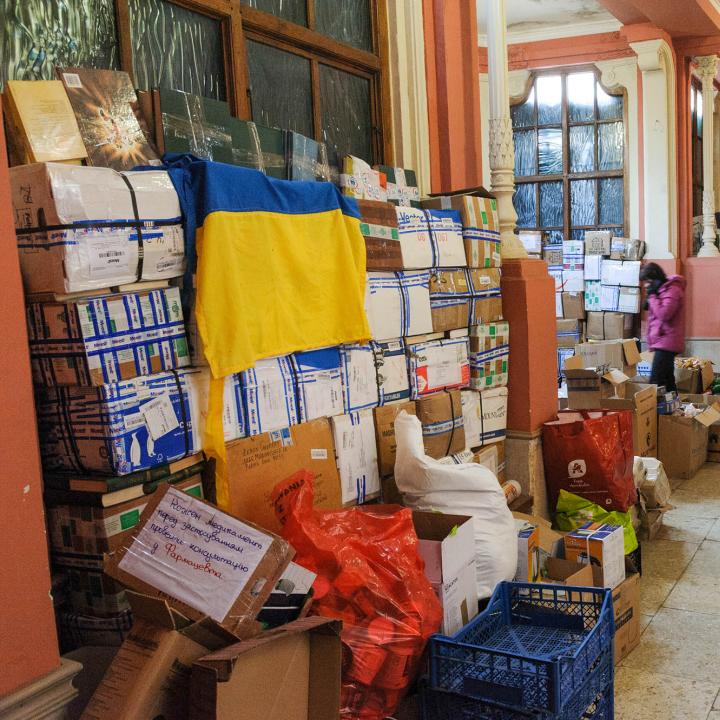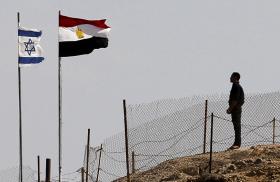

With the war on Ukraine in its fourth week, many features of how the conflict will play out are still unknown. However, with the first wave of Ukrainian refugees already within its borders, European Union policymakers should be looking to learn lessons now from over a decade of conflict in Syria to help address and mitigate the fallout from the war on Ukraine.
Perhaps one of the most disconcerting trends from the conflict in Syria—and echoed in CVE literature drawn from other conflicts—is evidence of how displaced and refugee women and children can be susceptible to radicalization. Mitigating this susceptibility and addressing the needs of these vulnerable populations is vital to avoid sowing the seeds for multigenerational, protracted conflicts.
Echoes of Syria in Ukraine
While the ongoing conflicts in Syria and Ukraine are quite different—one a civil war, the other a conventional military invasion—a common thread is Russia’s prominent and destructive role in both wars. Russia intervened to save the Assad regime a little over five years ago at a point in the Syrian conflict when the Assad regime looked to be in jeopardy. Russia’s intervention—in large part to reassert its role as a global player—bolstered the Assad regime and caused massive human suffering in the process. Russia began eating away at Ukrainian borders even earlier, annexing Crimea in 2014 prior to its current full-scale invasion. Putin has repeatedly used the pretext of NATO aggression to further his goal of restoring Russia’s prominence on the world stage.
The costs of Putin’s ambitions have not been limited to death, destruction, and the geopolitical uncertainty they have spawned. Russia has seemingly pursued population displacement by bombing civilian targets to encourage mass exodus. During the conflict in Syria, while millions fled the country altogether, many more sought respite in a constellation of displaced persons (DP) camps throughout the country outside of regime-held areas. The most prominent of these is al-Hol camp in northeastern Syria, which originally served as a camp for Iraqi refugees.
Similarly, Russia’s attacks have already prompted a mass departure of Ukrainian refugees, a new wave after the approximate million displaced persons who fled to Russia and other parts of Ukraine during the annexation of Crimea in 2014. As of March 15, 2022, the U.N. has reported that over three million people have already departed Ukraine as a result of the Russian invasion.
Historic Effects of Conflict on Women/Children
Women play diverse roles in conflicts: from active combatant to victims/spoils of war. Historically, however, women and children—who often lack the ability to defend themselves and who are frequently preyed on by combatants—have been disproportionately affected by conflicts. They frequently suffer trauma, forced displacement, and sexual violence, and are commonly denied access to post-conflict justice. War widows are frequently forced to become heads of households and to take on the responsibility for providing for their families. Sadly, many such women have limited job opportunities, and some may even resort to prostitution to survive. Furthermore, large numbers of displaced families, consisting primarily of women and children, find their way to DP camps. Regrettably, this appears to also be true in Ukrainian case as well where a disproportionate number of refugees are likely to be women and children, since men ages 18-60 are forbidden from departing the country by the Ukrainian government.
Avoiding Radicalization
The Syrian civil war has displaced over 13.5 million Syrians. Of these, 6.7 million remain in numerous internally displaced persons camps in Syria while 6.8 million are refugees outside the country. Large populations of refugees can pose difficult counter-radicalization challenges. The EU and UK have made efforts integrate Syrian refugees into their societies while working to reduce the impact on the local labor market—thereby mitigating the potential for resentment and radicalization. The large Syrian refugee populations living in camps in Turkey, Jordan, and Lebanon often endure harsh conditions, although the UN has provided humanitarian assistance to ease their lot. However, their presence and the burden they have imposed on local economies has generated resentment against them. Al-Hol Camp in Syria, however, represents the extreme end of the spectrum.
Since 2016, al-Hol has served as Syria’s largest displaced persons camp, hosting over 60,000 Syrian and foreign displaced persons according to 2021 estimates, all overseen by the Syrian Democratic Forces (SDF). While housed in a separate section of the camp, detained ISIS fighter family members are also kept at al-Hol and constitute a large portion of its total population: approximately 10,000 individuals from 57 countries.
More than 80 percent of the camp’s residents are women and children. According to a UN expert, “Thousands of people held in the camps are exposed to violence, exploitation, abuse and deprivation in conditions and treatment that may well amount to torture or other cruel, inhuman or degrading treatment or punishment under international law, with no effective remedy at their disposal. An unknown number have already died because of their conditions of detention.”
ISIS women and their children have committed numerous acts of violence as a means of asserting control over the camp. In 2021 alone, the Syrian Observatory for Human Rights calculated that ISIS-related violent incidents had left 89 dead, including 60 children. Relocation or repatriation of foreign nationals in this camp has been almost non-existent for a variety of reasons: coronavirus, the lack of a legal framework to prosecute detainees for crimes, and generally negative public opinion in their home countries. Although the SDF provides security oversight and NGOs have provided humanitarian assistance, al-Hol has nevertheless become a permanent purgatory for the camp’s DPs while making them an easy target for radicalization by the camp’s ISIS elements, thereby sowing the seeds of endless conflict.
The example of Al-Hol camp also underscores the danger that the heretofore marginal far-right ultranationalist fringe in Ukraine may see the existence of large displaced and refugee populations as an opportunity to radicalize and recruit in Ukraine and abroad.
Policy Implications
The tragedy of Syria’s experience with displaced persons, especially those trapped in camps, should be a lesson for the Ukrainian humanitarian crisis. As refugees begin to relocate across the continent, steps should be taken to ensure that the women and children fleeing from Ukraine are not targeted for radicalization.
First, the EU should avoid the creation of permanent DP camps whenever possible. Officials should also maximize the use of the expertise available from the UN High Commissioner for Refugees and UN Women in accordance with UN Security Council Resolution 1325–which addresses the topics of women, peace and security—as well as NGOs and charitable organizations already equipped to address immediate needs.
Second, the EU should work to ensure the integration of refugees from Ukraine into the societies of the host nations. Whenever possible, give Ukrainian women a say in the integration process to ensure their voices are heard and their concerns are addressed, assuming that Ukrainian refugees will remain outside their homeland. The EU should mirror similar approaches to those utilized for displaced Syrian refugees by maximizing public support—including private citizen sponsorship—coupled with strong political commitment to ensure successful resettlement. As an example, EU countries should make language classes available as well as utilize skills’ assessment tools to identify employment skills.
Lastly, the EU and international organizations around the world should take a long-term approach to building resiliency among women living in conflict-prone regions or potential conflict zones—including those countries that border Russia—to mitigate the impact of potential future conflicts. Providing avenues for women and girls to obtain an education is key to this process. Education provides access to greater employment opportunities, enables informed personal life choices, and will enable greater autonomy and self-reliance in the event that future conflicts turn them into displaced persons, refugees, or in the worst case, war widows who have to raise a family on their own.
The views expressed in this article represent the personal views of the author and are not necessarily the views of the Department of Defense, the Department of the Air Force or The Air University.



